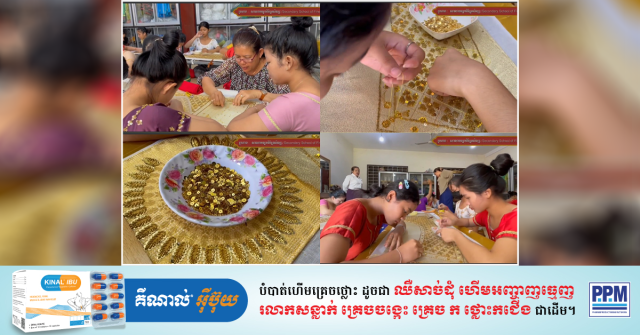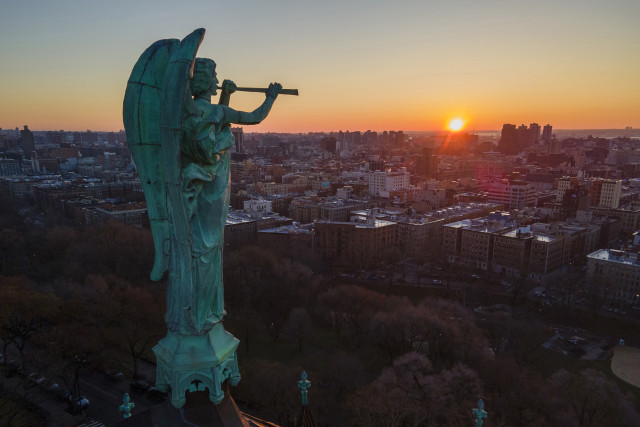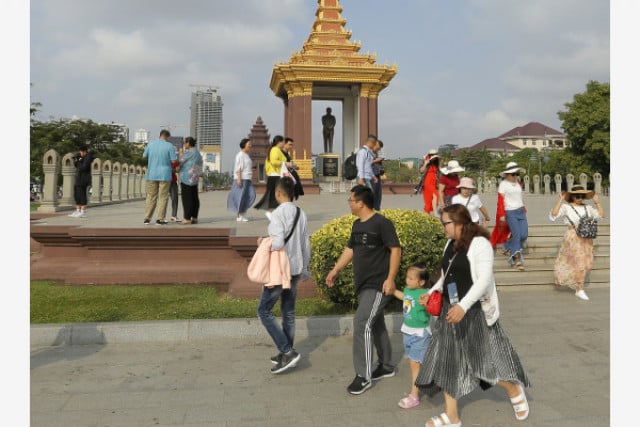Dance Students Learn Traditional Costume Skills

- By Po Sakun
- January 22, 2024 4:10 PM
PHNOM PENH – Students at the Secondary School of Fine Arts have the chance to learn embroidery and traditional costume decoration as part of their traditional dance course.
The courses aim to raise awareness of the values of ancestral works.
The school, the biggest public arts institution of its kind in the country, is divided into dance, music, circus, visual arts and theater departments.
Mao Tepmony, head of dance, said all students when entering their second year are required to learn more skills.
Female dance students must attend embroidery and traditional costume embellishment classes. Males must learn about leather carving and ancient mask making.
Learning these skills is essential for female students, Tepmony said.
“They are obliged to learn how to embroider Khmer dance shirts. This skill enables them to understand the value of the ancestral heritage,” she said.
“If they did not learn, they would not know the process and consequences of embroidering all of these traditional dance shirts as it requires patience and a long time.
“When they learn all of this stuff, I have no worries when they go out to perform as they can help each other with clothes preparation.”
Learning to embroider and decorate traditional costumes is just the first stage. The second stage is when they enter their junior and fourth years. Students are required to learn how to make traditional dance shirts.
Teaching these skills first started during the early 2000. Before this, only those who specialized in decorating were responsible for embroidery and decoration.
The school came up with these ideas after seeing the significance of expanding these ancestral skills to the younger generation,.
Female students spend two hours per week on the embroidery class. Despite the shortness of the classes, students need to put a lot of effort into studying as they are examined on the work they create.
Currently, there are 434 students, of whom more than 100 are male. All students are required to study these foundations for three years.
Originally written in Khmer for ThmeyThmey, this story was translated by Rin Ousa for Cambodianess.















